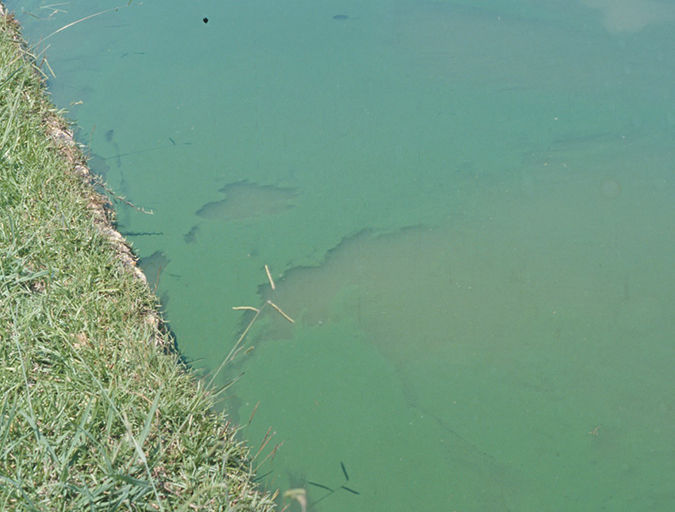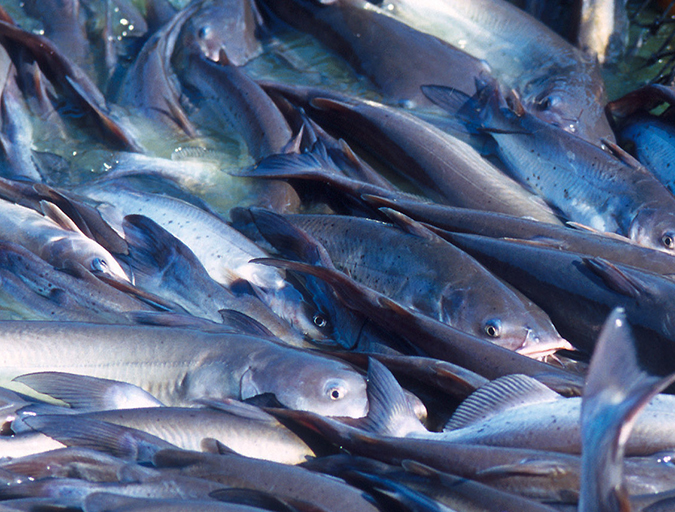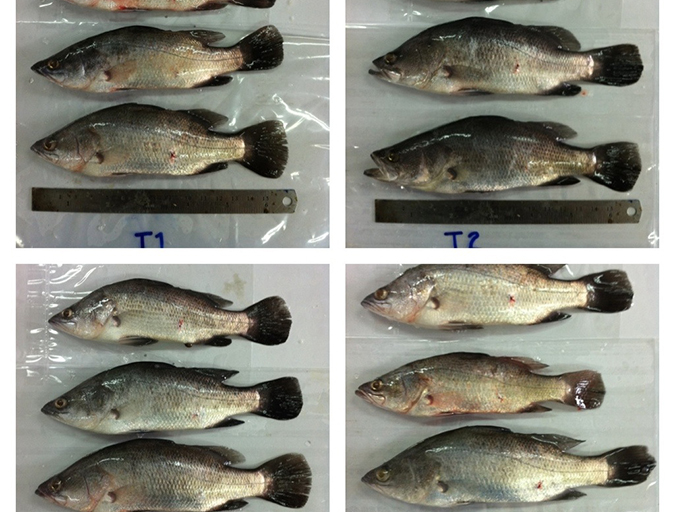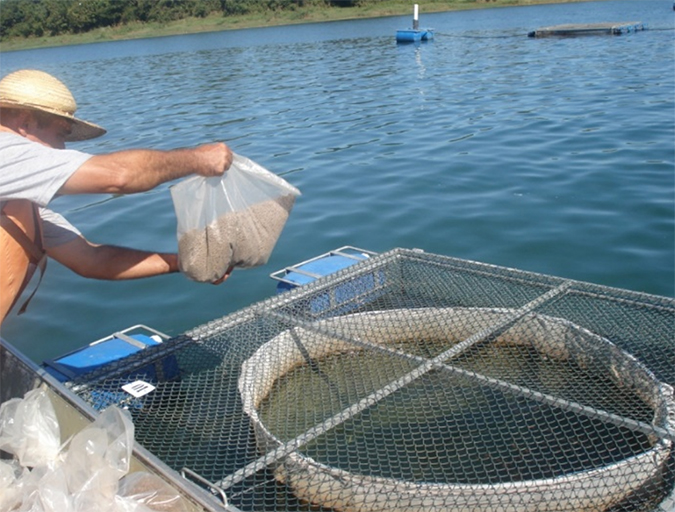Establishment of healthy gut microflora from feed additives has positive economic benefits

The European ban on the use of antibiotic growth promoters in livestock — and the subsequent search for alternatives — has revealed the importance of gut health and the development of a stable, favorable gut microflora on feed efficiency, overall performance and productivity. By contrast, in the aquaculture industry relatively little attention has been given so far to the optimal functioning of the digestive system of fish and shrimp. These animals are highly exposed to exchanges of microflora between the environment and their digestive systems. This increases the risk for the proliferation of an unfavorable gut microflora or its frequent destabilization, which can affect the optimal functioning of the digestive system. Furthermore, the digestive systems of fish and shrimp are the main entry port for bacterial, viral and parasitic infections, which remain a major risk for the profitability of aquaculture production. Therefore, it is not surprising that the establishment of a stable, well-balanced microflora in the digestive system is a key factor for maximizing production yield and profitability in aquaculture production.
Many natural compounds can modulate gut microflora
Sustainable approaches to modulate the gut microflora in aquaculture include the use of a wide variety of natural compounds capable of modulating the microflora towards a favorable composition, including probiotics, prebiotics, organic acids, yeast extracts and phytobiotics. These strategies may have synergistic effects; for example, phytobiotics can enhance the establishment of probiotic bacteria and therefore enhance the efficacy of probiotic inoculations. Here we describe the beneficial effects from growth promotors with gut modulating properties for aquaculture species.

Natural growth promotion in the absence of disease
A synergistic blend of phytobiotics was selected for their bacteriostatic and bactericidal properties against pathogenic and potentially pathogenic bacteria in vitro. This blend was capable of promoting growth significantly in feeding trials with healthy specimens of different species of fish and shrimp growing under controlled lab conditions (Fig. 1). These lab results have been confirmed in a number of studies under field conditions with different species of fish and shrimp. Researchers from the Instituto de Pesca, São José do Rio Preto, Brazil evaluated the effect of the natural growth promotor on production parameters and economics of tilapia production in cages (Sampaio Gonçalves et al., 2016; Table 1).
The trial was carried out in experimental cages (7-m3 each) during 111 days starting with tilapia averaging 170 grams, stocked at 840 fish per cage. The fish were fed a commercial diet with or without the addition of the feed additive and were evaluated in 5 replicate cages. The control treatment showed excellent production results, confirming the absence of any significant disease challenges during the trial. At harvest, the treatment receiving the feed additive showed significant improvements compared to the control group regarding survival, feed conversion, and growth, resulting overall in 7.7 percent increased biomass yield and 3.5 percent reduced feed costs per kg. of fish produced. The application of the feed additive overall increased the revenues for the farmer by 10 percent.
| Control | SANACORE GM | % Change vs. Control | p Value | |
|---|---|---|---|---|
| Survival (%) | 92.1 | 96.4 | 4.7 | 0.048 |
| FCR | 1.72 | 1.60 | -6.7 | 0.019 |
| Daily weight gain (g/day) | 4.93 | 5.05 | 2.5 | 0.165 |
| Average final fish weight (g/fish) | 714 | 734 | 2.8 | 0.021 |
| Harvested biomass | 100 | 107.7 | 7.7 | — |
| Feed intake as % ABW/d | 3.09 | 2.89 | -6.7 | 0.019 |
Reduced impact from diseases and parasites on productivity
Functional feeds containing gut health promotors deliver with every meal an adequate concentration of natural antimicrobial activities into the digestive system. These feeds are a key component of any strategy to prevent diseases in aquaculture, particularly when opportunistic bacteria are a major cause of mortality. However, the success of this approach will depend on the efficacy of the gut health promotor. The gut modulating feed additive ideally is heat stable and can therefore be easily incorporated into the feed at the feedmill, and be present in every meal from the starter feed onwards, without requiring major adaptations of the production protocols at the farm.
Natural feed additives combining different action mechanisms such as direct bactericide/bacteriostatic properties as well as Quorum Sensing inhibition properties at concentrations below MIC, are most promising to reduce the impact from bacterial diseases such as Vibriosis and Early Mortality Syndrome (EMS/AHPND) on survival of farmed shrimp (Fig. 2). The inclusion of such botanical feed additive in a pelletized feed under standard industrial conditions at the feed mill improved survival under production conditions in a semi-intensive shrimp farm in Panama with 24 percent and 18 percent, compared to the control group during two independent production cycles (Cuellar-Anjel et al., 2011). In these production trials, the main disease challenge at the farm consisted of White Spot virus and Vibriosis.

A recent pilot production trial carried out in small ponds at a shrimp farm located in the Guayas Province of Ecuador showed that the supplementation of a gut health modulator resulted in improved values for survival (with 20.5 percent compared to control), crop yield (with 14.1 percent) and food conversion (with 14.9 percent) (Valle and Coutteau, 2015). Loc et al. (2015) was able to confirm the effect of the same synergistic phytobiotic product in a controlled challenge trial with Vibrio parahaemolyticus (EMS/AHPND strain) under laboratory conditions; showing 62 to 107 percent increased survival in shrimp that had received the additive during 3 weeks prior to the experimental infection, compared to unsupplemented control groups. In the latter study by Loc and collaborators, the addition of the phytobiotic product in the diet resulted in consistently lower Vibrio counts in the shrimp’s digestive system compared to the control, illustrating the capability of gut modulating additives to protect the shrimp’s gut flora throughout a Vibrio challenge.
Perspectives
Many current aquafeed formulations are mainly focused on nutritional specifications and ingredient choices, whereas the optimal utilization of the nutrients by the fish and the health status of the digestive tract are two areas that are not often taken into account. This is in strong contrast with the vast progress made in the land-based agrifeed sector, where nutrient digestibility and gut health are regarded as two focus areas for technological development of feeds. Our laboratory and field studies have demonstrated the potential benefits for aquaculture in terms of productivity and economics of specific feed additives developed to stimulate the establishment of a healthy gut microflora.
References available from P. Coutteau.
Now that you've reached the end of the article ...
… please consider supporting GSA’s mission to advance responsible seafood practices through education, advocacy and third-party assurances. The Advocate aims to document the evolution of responsible seafood practices and share the expansive knowledge of our vast network of contributors.
By becoming a Global Seafood Alliance member, you’re ensuring that all of the pre-competitive work we do through member benefits, resources and events can continue. Individual membership costs just $50 a year.
Not a GSA member? Join us.
Authors
-

Peter Coutteau, Ph.D.
Business Unit Director, Aquaculture
Nutriad
Hoogveld 93, 9200 Dendermonde
Belgium
-

Mercè Isern i Subich, DVM
Business Development Manager, Aquaculture Health
-

Alexander van Halteren
Business Development Manager, Aquaculture Nutrition
-

Sam Ceulemans
R&D Manager
Tagged With
Related Posts

Health & Welfare
Phytoplankton a crucial component of aquaculture pond ecosystems
Phytoplanktonic organisms, or microalgae, are very abundant in aquaculture ponds and have critical roles in these ecosystems, significantly influencing overall pond ecology and water quality. Proper management of phytoplankton populations is essential for successful aquaculture pond production.

Intelligence
Biofloc technology production promising in temperate zones
A study was conducted to assess the feasibility to grow Channel catfish (Ictalurus punctatus) in an outdoor biofloc system during winter in a temperate zone. High biomasses of market-size channel catfish were successfully maintained through the winter with high survival and in good condition in both treatments.

Aquafeeds
Improving productivity, efficiency in Asian sea bass aquaculture
The effects of the dietary acidifier and feed additive potassium diformate (KDF) were tested in diets of juvenile Asian seabass (Lates calcarifer) in Thailand. Results show that including KDF at 0.5 percent in the diets can help improve growth, survival and therefore overall production of this species.

Health & Welfare
Aiding gut health with a natural growth promotor
A study with Nile tilapia conducted in commercial production cages in Brazil showed the potential – in the absence of major disease threats – of a commercial, natural growth promotor that modulates the microbiota (inhibiting growth of pathogenic bacteria and promoting growth of beneficial bacteria) and inhibits quorum sensing.


